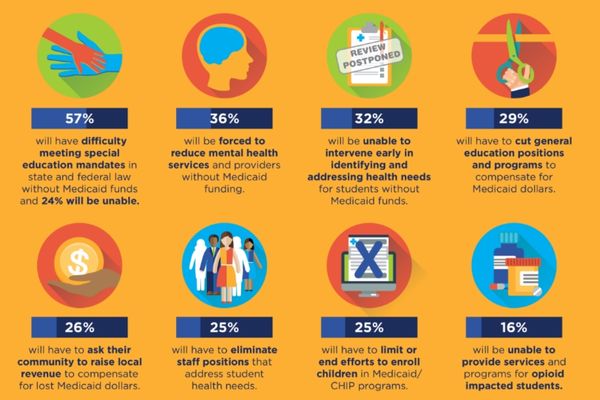The School Mental Health Dilemma: Philosophy vs. Funding
September 01, 2016
The ESSA makes a stronger statement than previous federal authorizations about the impact of nonacademic factors, including school-based mental health
The Every Student Succeeds Act makes a stronger statement than previous federal authorizations about the impact of nonacademic factors, including school-based mental health, on improving student outcomes.
Additional federal focus comes through the new Title IV-A block grant program, which identifies school mental health as one of several ways to ensure students are safe, healthy and ready to learn.
In fact, school-based mental health is mentioned throughout the law. These services are seen as a strategy to address needs of at-risk students in Title I, while Title II funds are available to train school district staff in forming school mental health partnerships and understanding when it is appropriate to refer students for services.
Competitive Grants
School-based mental health figures most prominently in the Title IV-A Student Support and Enrichment grants. The grants support activities relating to three distinct aims: well-rounded educational experiences for all students; safe and healthy conditions for learning; and better use of technology.
When the funding level for Title IV is high enough to provide $30,000 at the local level, several spending parameters will be in place. Twenty percent of the grants to local education agencies must be spent on improving the environment for learning and that includes strong mental health supports to address students’ academic and behavioral challenges. Funds also may be used for drug and violence prevention activities, supporting healthy and active lifestyles, preventing bullying and harassment and providing mentoring and counseling to at-risk students.
The block grant replaces a number of small competitive grant programs that funded personnel and targeted programming. The move from competitive to formula grants was intended to broaden funding to every school district, especially compensating districts unable to compete or unsuccessful in trying.
School mental health advocates had mixed feelings about this change and the implications for services. In particular, the block grants brought an end to the Elementary and Secondary School Counseling Program, the only federal grant specifically for hiring school social workers, school psychologists and school counselors. Now school mental health is competing against other important priorities for improving conditions for learning, and school districts will have some tough decisions to make.
Diminished Prospects
The real challenge lies in how much money Congress will allocate for Title IV-A. Congress showed strong support for these activities, authorizing funding for the block grant up to $1.65 billion for the first year. At that funding level, school districts would be able to make good choices without shortchanging important priorities. The president lowered expectations for Title IV-A funding, putting only $500 million in his FY 2017 budget proposal, and realistically with tight budget caps, the final figure could be half of that.
The Senate’s appropriations bill put in $300 million. Under that scenario, many school districts would not receive even the minimum $10,000 grant required by law. The House appropriations bill, on the other hand, includes $1 billion for Title IV-A, while eliminating funding for close to two dozen education programs. Advocates are pleased with the House number, but the cost of losing discrete programs is high.
With few dollars to invest in comprehensive school mental health services, districts may be challenged to hire full-time school-employed mental health service providers.
However, relying solely on community mental health partners to provide ongoing support to all K-12 students is problematic. School mental health providers should not be used to intervene only when a crisis arises. Their real strength lies in being a regular presence to help students overcome barriers to full involvement in class and academic success. Trained school-based staff know when to refer students and families for more intensive community-based services.
So will Title IV-A make a difference for school districts trying to build a comprehensive mental health program? That’s uncertain. Congress set the right priorities in ESSA, and now the funding must follow.
All students deserve access to well-trained school
mental health professionals, caring adults with the tools to help them navigate the pains of childhood and the larger barriers to full educational participation.
About the Author
Myrna Mandlawitz is director of government relations for the School Social Work Association of America in Washington, D.C.
Advertisement
Advertisement
Advertisement
Advertisement



